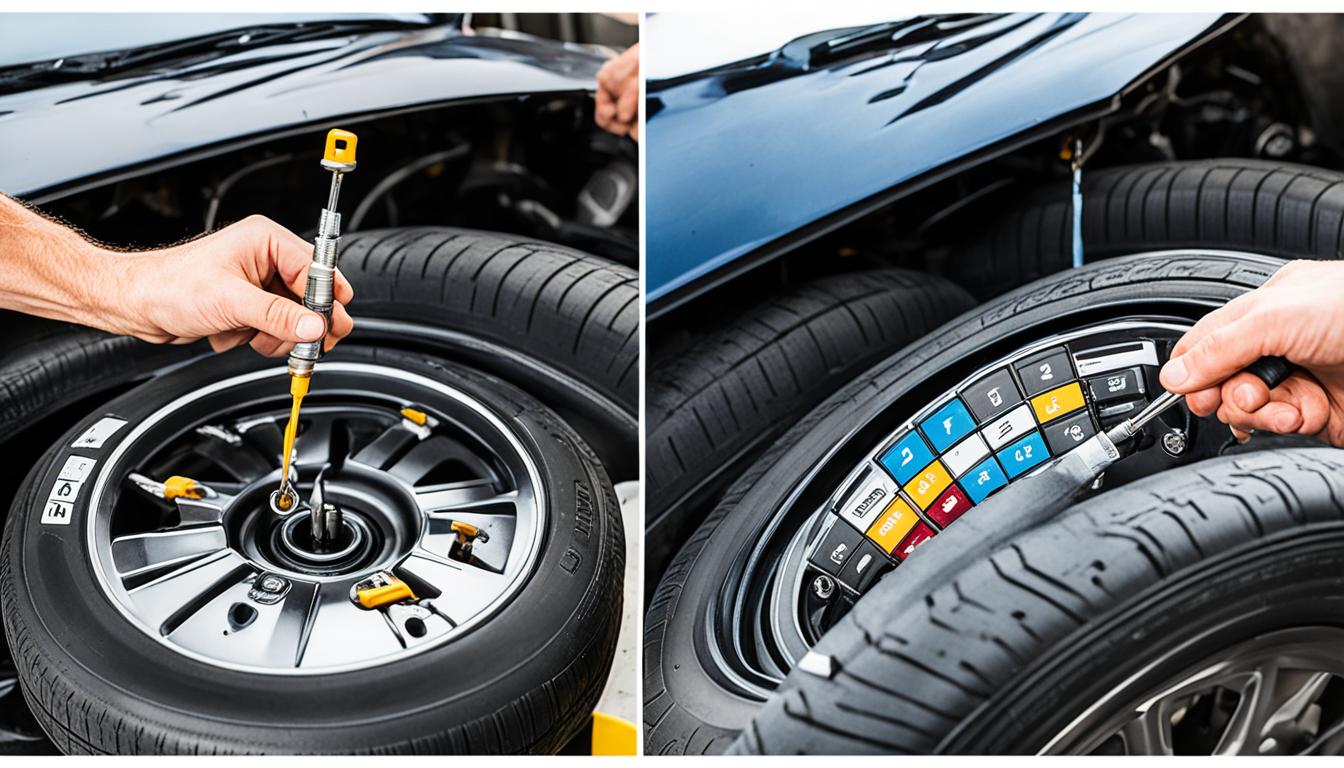All Categories
Featured
Liable for integrating the turning of the crankshaft and camshaft, the timing belt ensures the engine's shutoffs close and open at the appropriate times during the burning procedure. If the timing belt falls short, it can result in extreme engine damages.
What Is a Timing Belt? The timing belt is a long, toothed rubber or composite belt that attaches the crankshaft to the camshaft(s) in an internal burning engine. Its work is to maintain the engine's valves and pistons in sync, making certain the engine runs effectively. The timing belt likewise controls other essential engine features like the water pump and the power steering pump, depending upon the automobile.
![]()
Without the proper timing, the engine's valves and pistons can clash, leading to considerable and expensive damage. Changing the timing belt on timetable is one of the ideal methods to guarantee your engine runs at its best and avoid costly fixings.
Why Timing Belt Replacement Matters. Preventing Catastrophic Engine Damage: One of the most significant danger of not changing a worn timing belt is engine failing. If the timing belt breaks while the engine is running, the camshaft and crankshaft can end up being misaligned, triggering the pistons and valves to clash. This can lead to curved valves, damaged pistons, or also a damaged engine. Replacing the timing belt at the suggested periods is the most effective method to avoid such tragic damage, saving you from the tension and high expense of engine fixings or replacement.
![]()
Keeping Engine Efficiency: A timing belt that's in great condition makes sure that all engine parts work in best harmony. If the timing belt is worn or stretched, it can create the engine to shed power, experience harsh idling, or struggle to begin. By changing the timing belt routinely, you can keep your engine running at peak effectiveness, which aids preserve ideal fuel economy and performance.
Staying Clear Of Unforeseen Malfunctions: A damaged timing belt can cause your engine to stop quickly, possibly leaving you stranded in the middle of a trip. By changing your timing belt on schedule, you decrease the threat of sudden failures that can leave you in a bothersome or harmful situation. Routine maintenance decreases the possibilities of experiencing these type of disruptions, helping you stay on the road much longer without fretting about your engine failing.
Affordable Maintenance: Timing belt replacement is much less costly than repairing or replacing an engine that's been damaged because of a timing belt failing. While the price of replacing the timing belt may differ depending on your automobile and its location, it is much more affordable than the prices connected with major engine repair work or replacements. Replacing your timing belt at the recommended periods can save you a substantial quantity of cash over the long term by stopping damage to your engine.
When Should You Change Your Timing Belt? The timing belt does not last forever, and many suppliers recommend changing it between 60,000 and 100,000 miles. The precise timing depends on your vehicle's make, design, and driving problems, so it's crucial to check your owner's guidebook for certain guidance.
Indications that your timing belt might require focus include unusual engine noises (such as a high-pitched whining or ticking audio), difficulty starting the engine, or a reduction in engine performance. If you discover any one of these indications, it's crucial to have the timing belt checked by an expert mechanic.
![]()
Verdict. The timing belt is a important however small part of your engine, and normal substitute is vital to preserving your vehicle's performance and preventing expensive damage. By staying on top of timing belt upkeep, you'll guarantee your engine operates successfully, stay clear of unexpected malfunctions, and secure your vehicle from major repair work. Keep an eye on your car's recommended timing belt substitute timetable, and always talk to a relied on technician to maintain your engine running smoothly for years to come.
What Is a Timing Belt? The timing belt is a long, toothed rubber or composite belt that attaches the crankshaft to the camshaft(s) in an internal burning engine. Its work is to maintain the engine's valves and pistons in sync, making certain the engine runs effectively. The timing belt likewise controls other essential engine features like the water pump and the power steering pump, depending upon the automobile.

Without the proper timing, the engine's valves and pistons can clash, leading to considerable and expensive damage. Changing the timing belt on timetable is one of the ideal methods to guarantee your engine runs at its best and avoid costly fixings.
Why Timing Belt Replacement Matters. Preventing Catastrophic Engine Damage: One of the most significant danger of not changing a worn timing belt is engine failing. If the timing belt breaks while the engine is running, the camshaft and crankshaft can end up being misaligned, triggering the pistons and valves to clash. This can lead to curved valves, damaged pistons, or also a damaged engine. Replacing the timing belt at the suggested periods is the most effective method to avoid such tragic damage, saving you from the tension and high expense of engine fixings or replacement.

Keeping Engine Efficiency: A timing belt that's in great condition makes sure that all engine parts work in best harmony. If the timing belt is worn or stretched, it can create the engine to shed power, experience harsh idling, or struggle to begin. By changing the timing belt routinely, you can keep your engine running at peak effectiveness, which aids preserve ideal fuel economy and performance.
Staying Clear Of Unforeseen Malfunctions: A damaged timing belt can cause your engine to stop quickly, possibly leaving you stranded in the middle of a trip. By changing your timing belt on schedule, you decrease the threat of sudden failures that can leave you in a bothersome or harmful situation. Routine maintenance decreases the possibilities of experiencing these type of disruptions, helping you stay on the road much longer without fretting about your engine failing.
Affordable Maintenance: Timing belt replacement is much less costly than repairing or replacing an engine that's been damaged because of a timing belt failing. While the price of replacing the timing belt may differ depending on your automobile and its location, it is much more affordable than the prices connected with major engine repair work or replacements. Replacing your timing belt at the recommended periods can save you a substantial quantity of cash over the long term by stopping damage to your engine.
When Should You Change Your Timing Belt? The timing belt does not last forever, and many suppliers recommend changing it between 60,000 and 100,000 miles. The precise timing depends on your vehicle's make, design, and driving problems, so it's crucial to check your owner's guidebook for certain guidance.
Indications that your timing belt might require focus include unusual engine noises (such as a high-pitched whining or ticking audio), difficulty starting the engine, or a reduction in engine performance. If you discover any one of these indications, it's crucial to have the timing belt checked by an expert mechanic.

Verdict. The timing belt is a important however small part of your engine, and normal substitute is vital to preserving your vehicle's performance and preventing expensive damage. By staying on top of timing belt upkeep, you'll guarantee your engine operates successfully, stay clear of unexpected malfunctions, and secure your vehicle from major repair work. Keep an eye on your car's recommended timing belt substitute timetable, and always talk to a relied on technician to maintain your engine running smoothly for years to come.
Latest Posts
Check Out Brake Repair & More: Comprehensive Auto Care Solutions from Montclare Auto Repair
Published May 28, 25
1 min read
Unlock WyHy Federal Credit Union – Wyoming’s Best Banking Choice for Your Money Goals
Published May 26, 25
1 min read
Join Your Financial Partner at WyHy – Top Benefits for Your Goals
Published May 25, 25
1 min read
More
Latest Posts
Check Out Brake Repair & More: Comprehensive Auto Care Solutions from Montclare Auto Repair
Published May 28, 25
1 min read
Unlock WyHy Federal Credit Union – Wyoming’s Best Banking Choice for Your Money Goals
Published May 26, 25
1 min read
Join Your Financial Partner at WyHy – Top Benefits for Your Goals
Published May 25, 25
1 min read